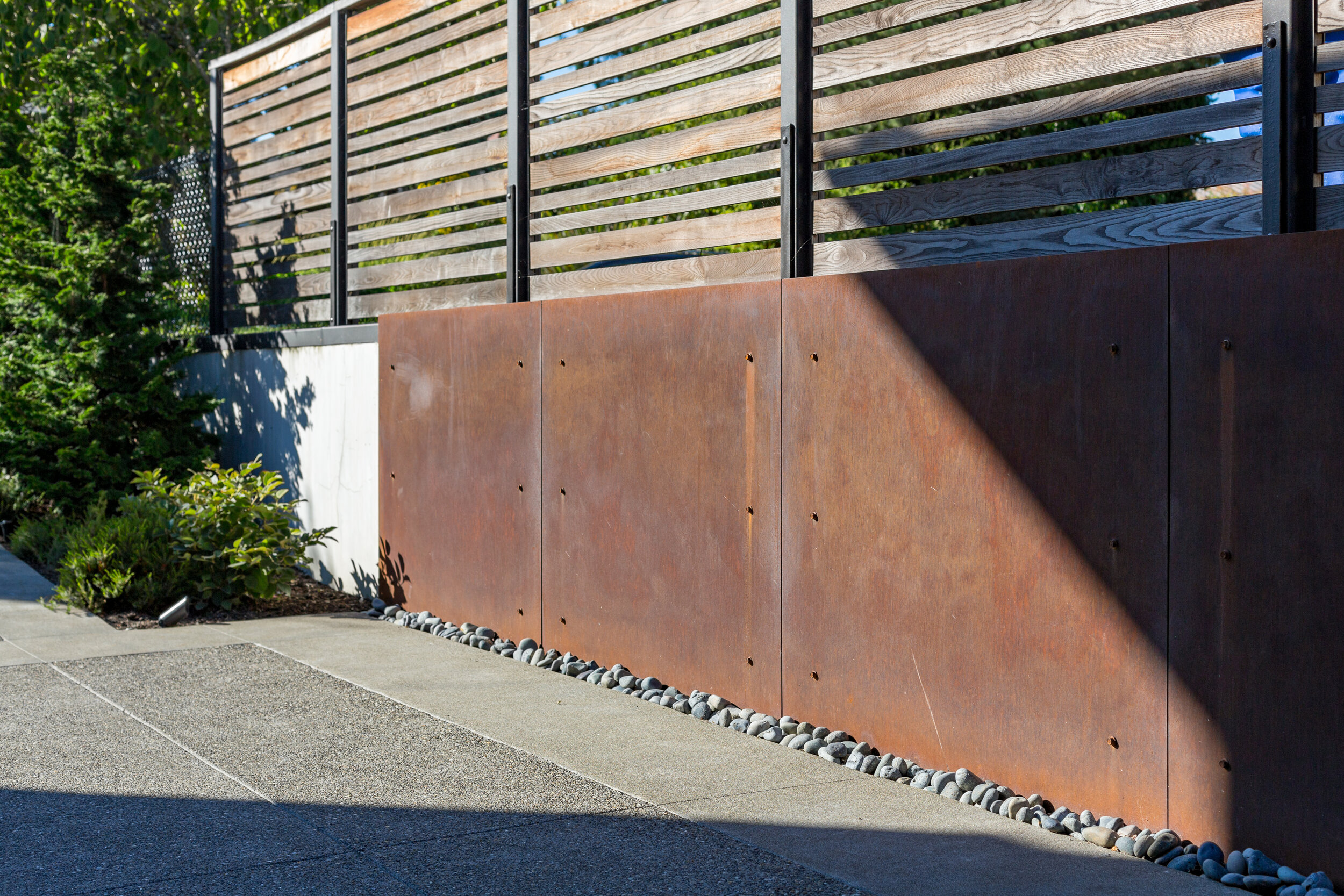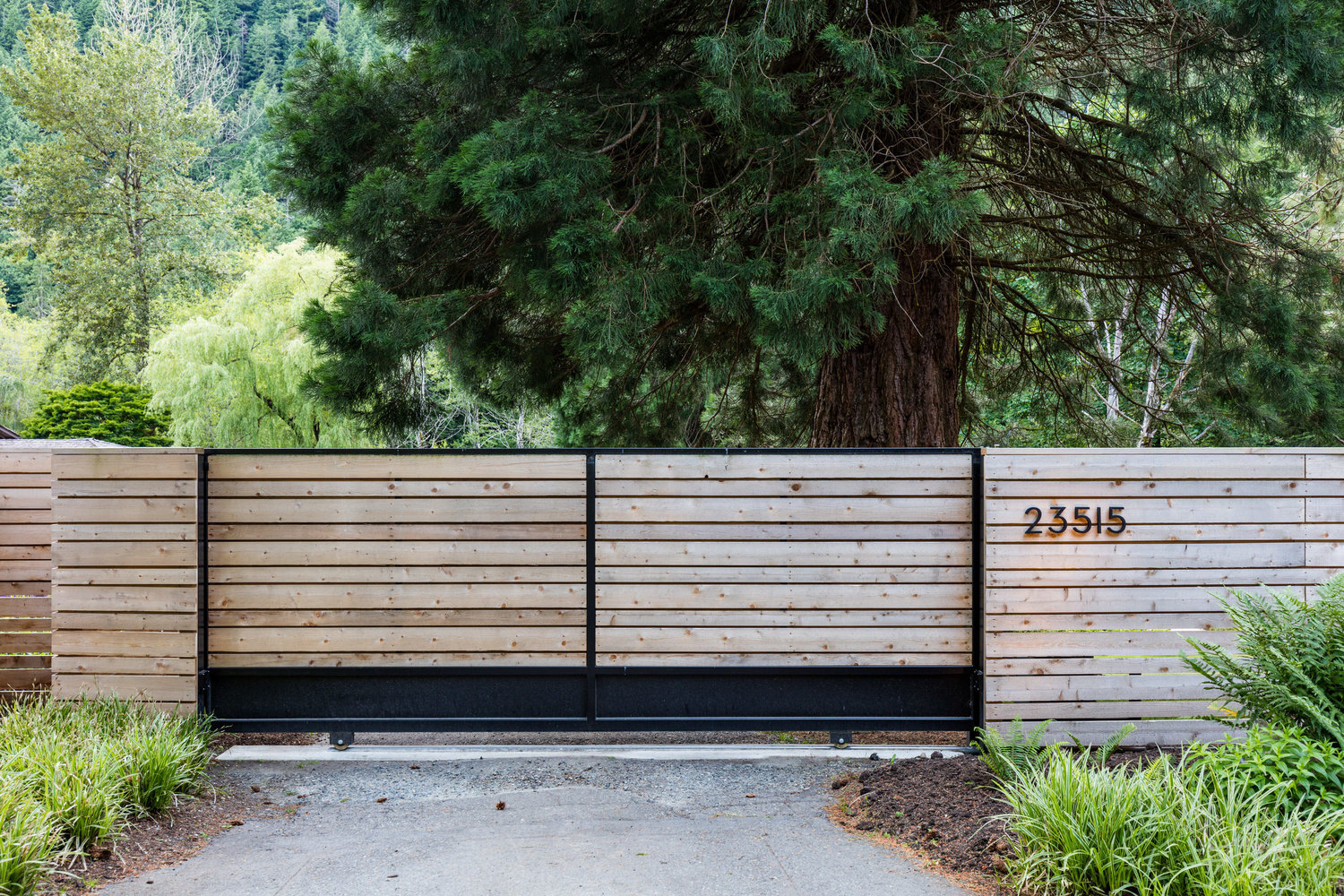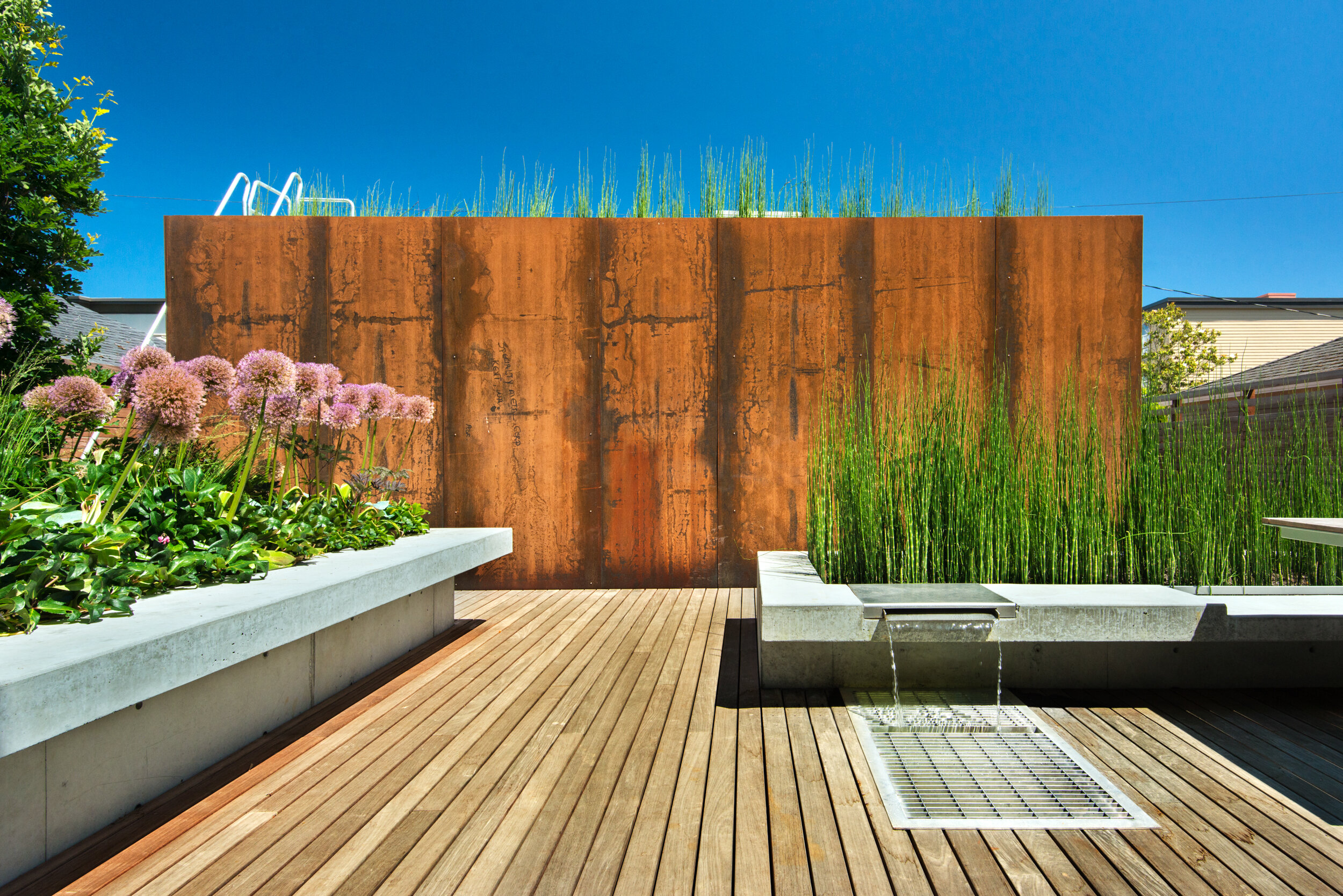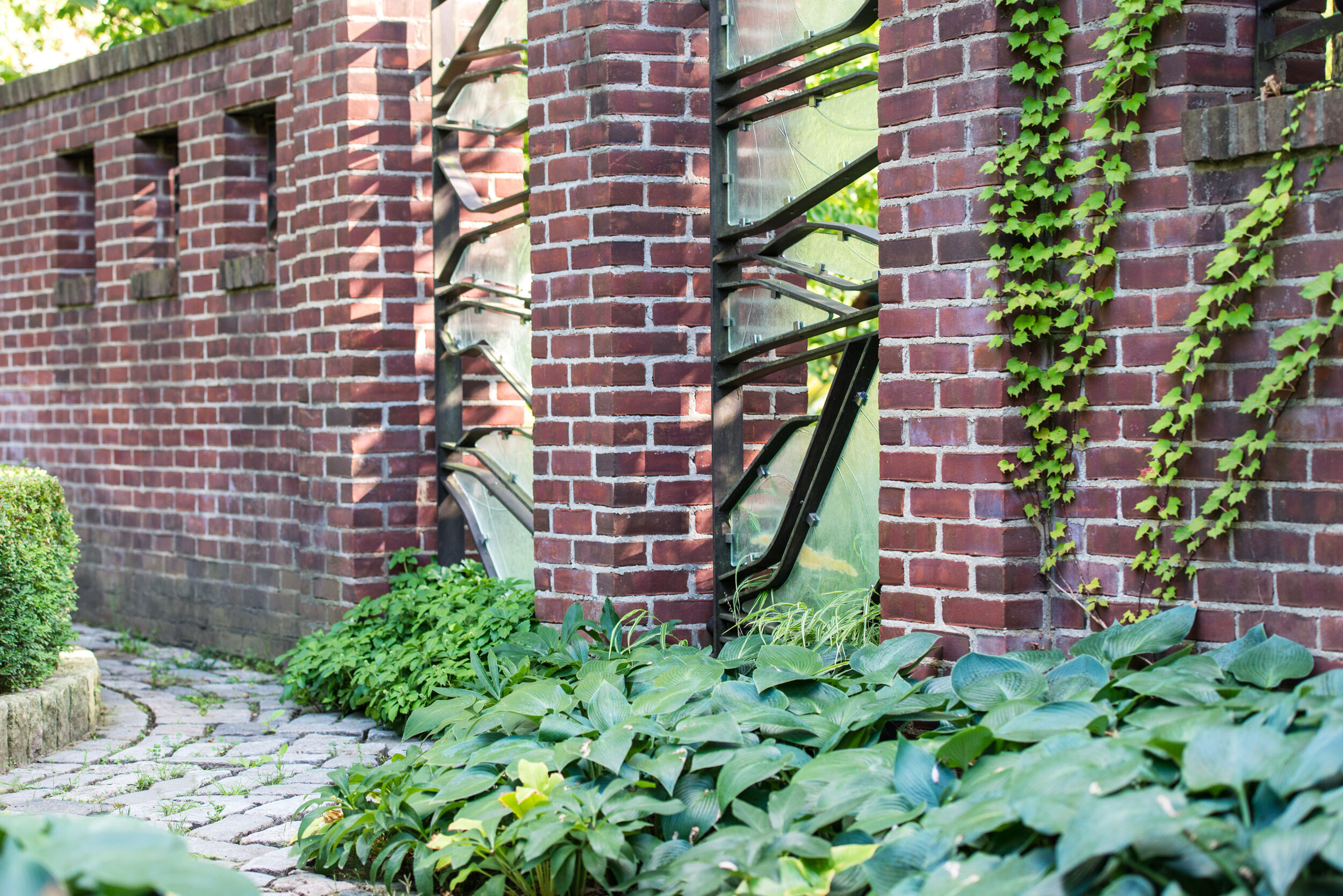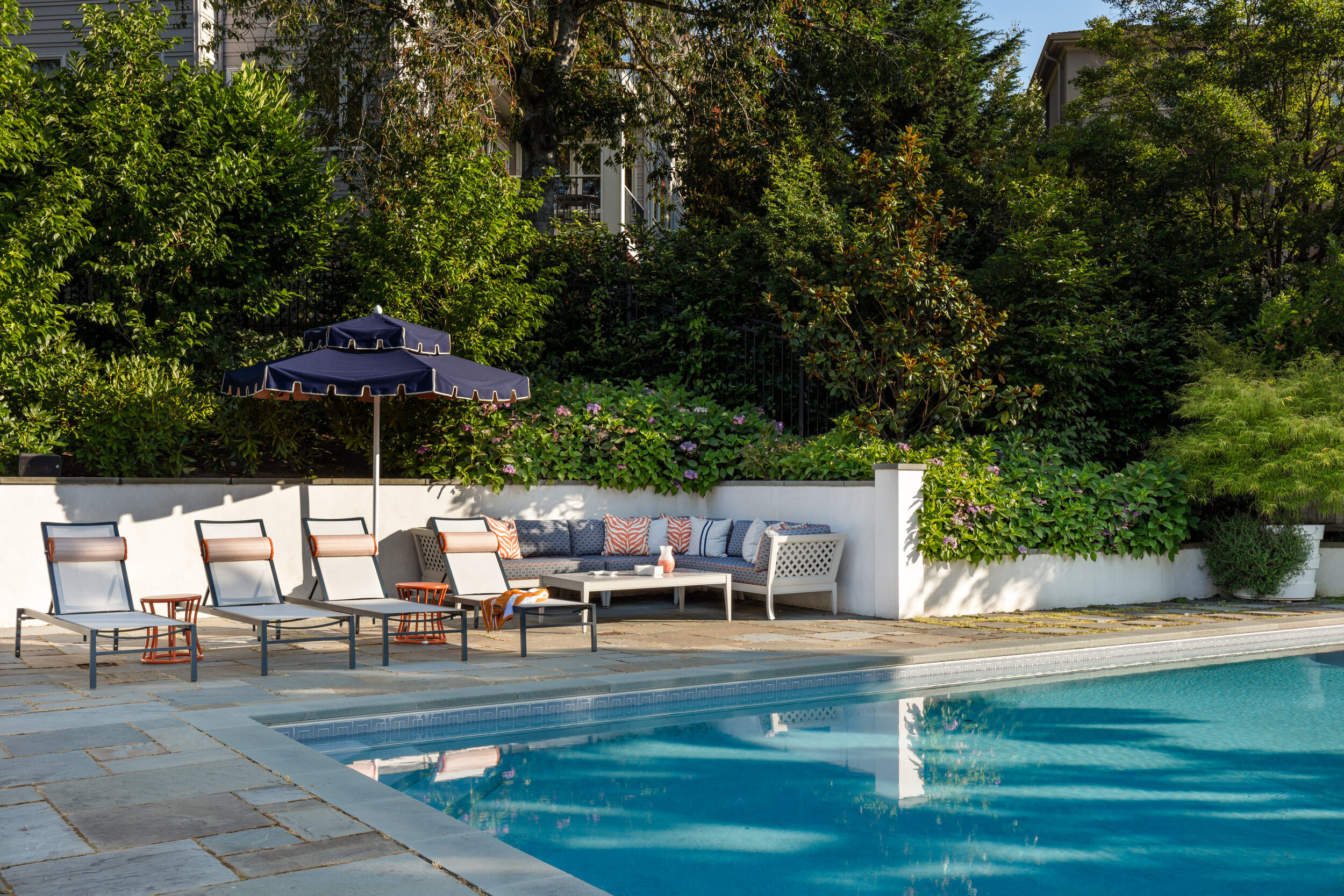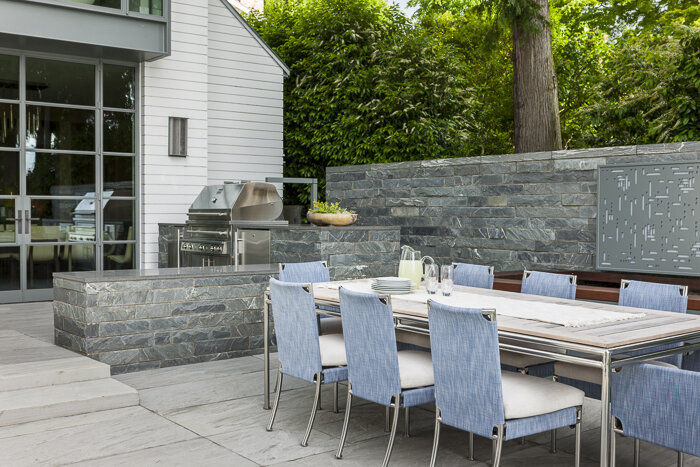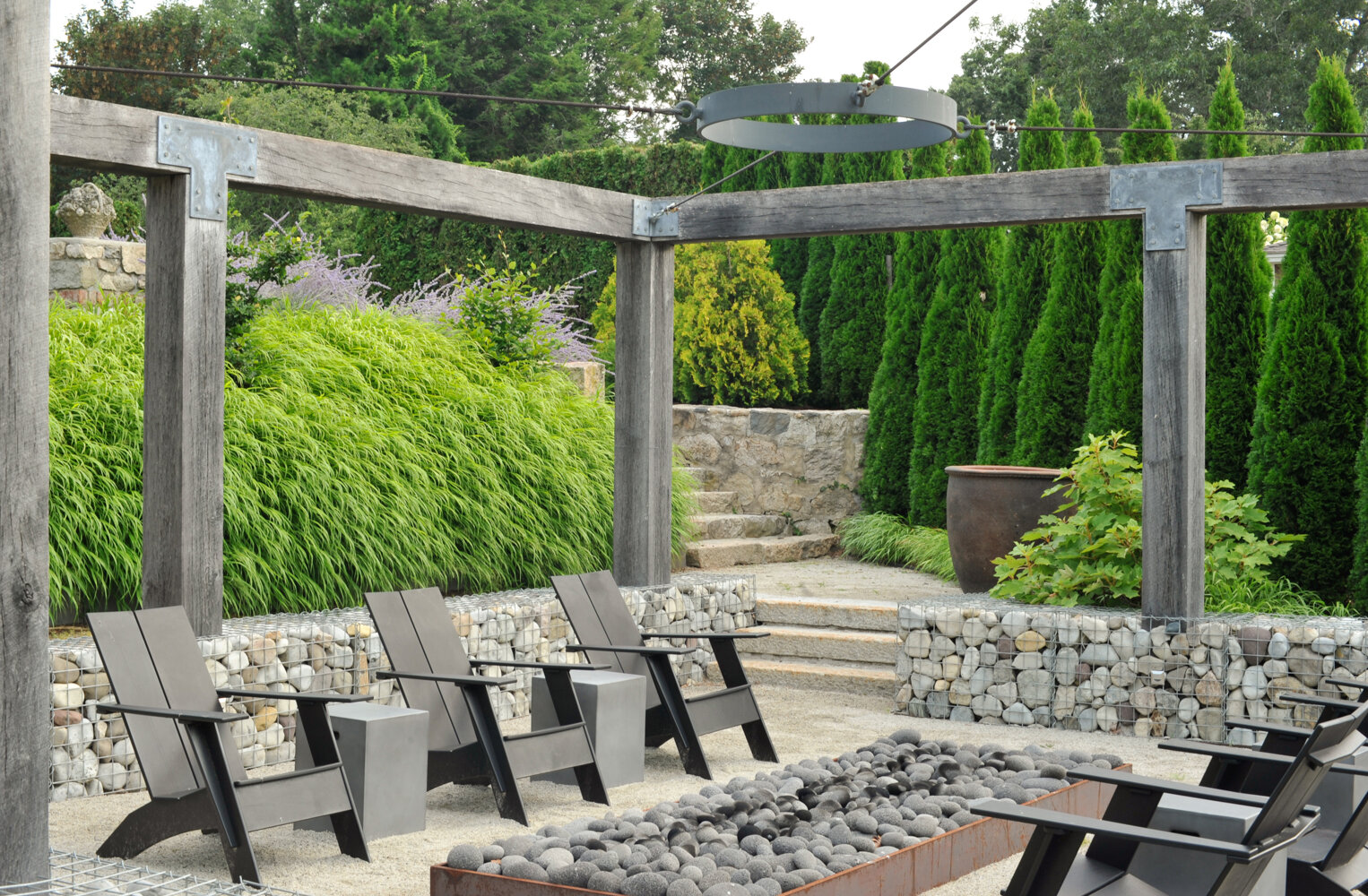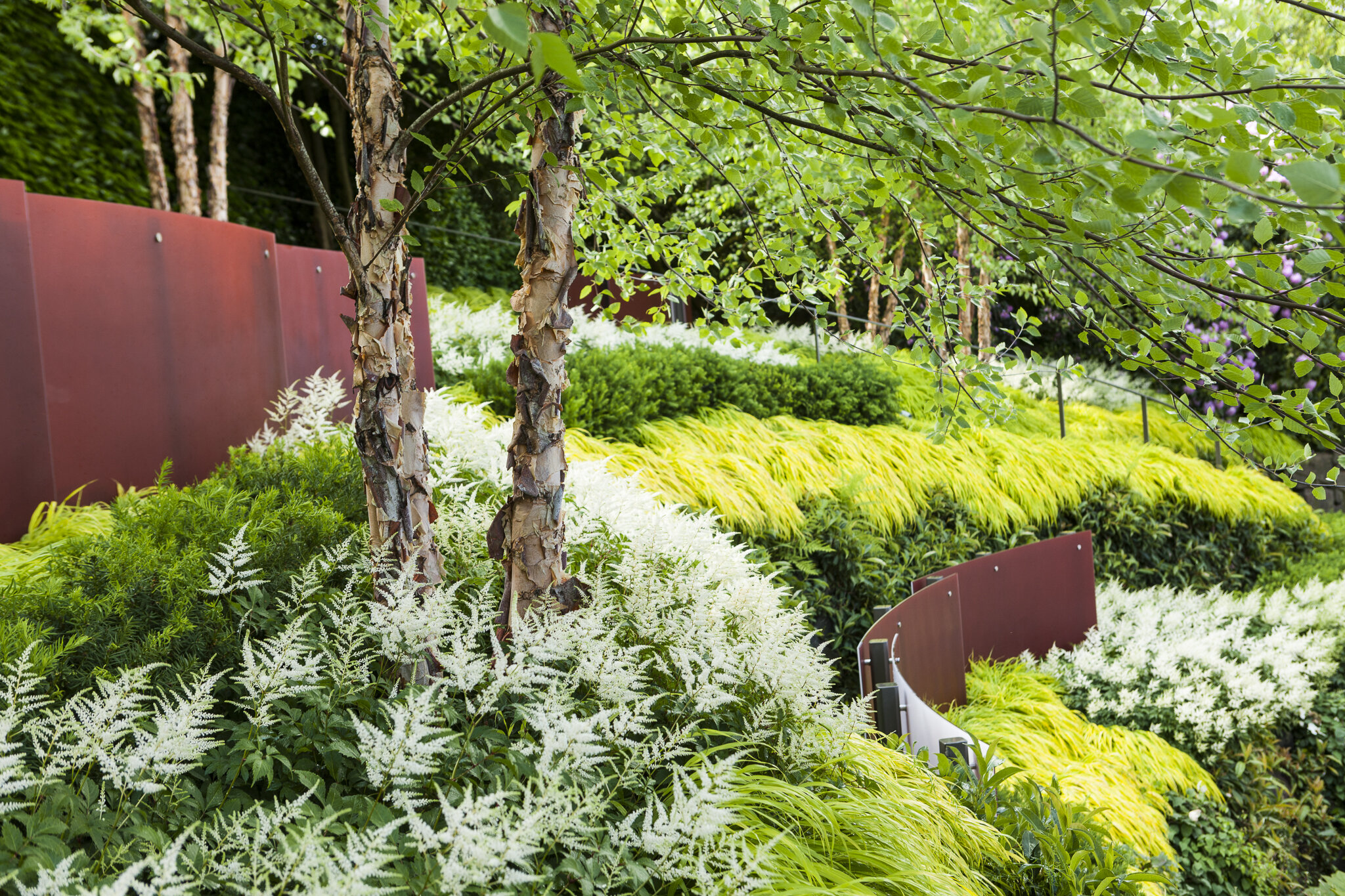The Fence Post
Fences and walls are valuable structures to integrate into the look and feel of your garden. When considering building or replacing a fence, think of the fence as an extension of your architecture – a well-designed fence should complement the main building and provide an attractive backdrop or framework for the garden.
For many homeowners, a starting point in their desire for a fence may be purely practical – to provide security, privacy, or delineation of spaces – and yet a good fence is also of striking design value.
This light and airy fence protects the resident dog. Home by Heliotrope Architects. Photo by Miranda Estes
FORM
Thoughtful wrought iron deck fencing allows enjoyment of the Lake Washington view and provides fall-safety. Photo by Miranda Estes
Choosing a fence style from among the tremendous number of historic and contemporary references can be a fun and creative process. Rustic; sleek and contemporary; Japanese-inspired; traditional American wood fences; and so on, are examples of appealing complements to many regional architectural styles. The material of the fence – wood, metal, masonry wall? – as well as rhythm and spacing of elements, finishes, and color are essential design factors. As the inherent length of a fence gives it the opportunity to be a unifying feature across an extensive area, it’s worth taking into account the style of existing pergolas, trellises, or other structures that you value in your space.
Style and material are closely linked, particularly when accentuating a historic or regional style. Wood, metal, and masonry are the most general categories. Combinations of materials can be very striking: decorative metal panels interspersed with wood sections can look artistic and contemporary; wood fences with masonry pillars can look elegant and historic.
Wood fences are frequent companions for many Pacific Northwest Craftsman or Queen Anne style houses, as well as contemporary; these are most typically made with cedar or redwood lumber, which is beautiful, reflective of the region, and the most durable North American species for the wet winter climate. Like other exterior wood structures, a certain amount of maintenance in application of sealants/finishes is required to keep a fence in good condition for many years; however, the range of styles and detailing can seem almost limitless.
Metal fences, when made of ornamental steel, iron, or a lookalike material, go well with historic housing styles such as Italianate or Victorian-era homes; vertical metal slats and panels can go well with contemporary styles. Metal fences require some upkeep and monitoring to prevent weathering and rust, although this tends to be less than for wood fences.
Masonry walls – rock, brick and concrete - can also be excellent visual partners to many residential settings. Where a stone texture is desired but a full-height wall is too dense or expensive, low rock walls can make beautiful bases for wood or metal fences. Although some engineering is required up front to ensure the long-term stability of the wall, stone walls once built can be low-maintenance and extremely durable.
Fences made from any of these materials can be elevated with thoughtful detailing. Materials can be arranged into unique patterns; ornamental gates can be focal points; trim and cap pieces can be subtly integrated or chosen to stand out; and other distinctive features such as pops of color, custom posts, lattice embellishments, visible or hidden hardware and fasteners, integrated structures such as arches and trellises, etc. can be chosen and combined to make your fence a unique expression of your particular setting and personal style.
FUNCTION
Photo by Claire Takacs
How much privacy and security are you hoping for your fence to provide? This is a common function for fencing, and where maximum privacy is required, you are likely to want as solid a fence as you can get. There is no shortage of attractive options for solid, high fences, although keep in mind that most jurisdictions allow a maximum 6’ height fence, and that you may have views beyond the fence – of greenery, water, a pleasant neighborhood – to which you would like to maintain some sightlines.
One option is to combine a more open fence with dense plantings. Widely spaced wood slats or cable-railing fences can provide some security and delineate space while still leaving a degree of visibility beyond property limits, or creating the impression of an unbroken swath of planting. Similarly, fences with visually open panels can be used within a property to separate spaces, add partial screening without fully blocking, or mark the edge of a path without creating a hard barrier.
Fences can also be used as a purely aesthetic element, or to provide a backdrop for a garden. They may be a stand-alone, eye-catching element, or they might be used to create a structural contrast for otherwise soft and flowing perennial and ornamental grass plantings. Fences can perform multiple functions; a fence used to mark the edge of a children’s play area, for example, could also be used as a support for climbing plants.
Whether a minimalistic construction that blends into plantings or an architectural statement in its own right, a fence is one of the largest and probably most extensive structures you will place in your site. It can be as much a surface for creative exploration as any other aspect of your garden, and deserves thoughtful attention.
Photo by John Granen. Installation by Nussbaum Group.



